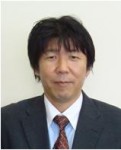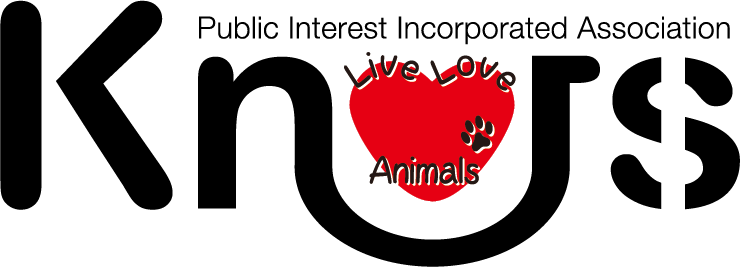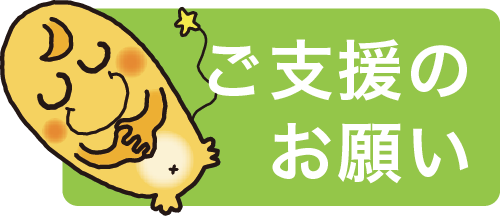Workshop Ⅷ”Food Safety”
|

Yoshikawa, Yasuhiro
PhD,
Professor, School of Veterinary Medicine, Kitasato University,
Emeritus Professor, The University of Tokyo,
Member, Science Council of Japan
![]()
It was not until between 10 to 20 years after World War II, and the food crisis of those times, that the Japanese people were all able to enjoy a stable diet of three meals a day and adequate nutrition. Furthermore, there was a barrage of contagious diseases for nearly two to three decades after the war’s end, for example, typhoid, paratyphoid, shigellosis, tuberculosis, Japanese encephalitis, measles, and polio encephalomyelitis. Many infectious diseases surrounded us, lined up like goods on a supermarket counter. Relatively speaking, consideration of food poisoning risk was not high at the time. Food sanitation controls were very poor and a “safety myth” did not exist. Consumers relied on practical knowledge and experience to distinguish safe from dangerous ingredients, and took responsibility for their own safe-eating habits.
Half a century later we live in an age of plentiful food and “food safety” has become a major social theme. No risk in food can be permitted. Farmers as well as the people working in food processing, food distribution and retail selling are working hard towards and focused on zero risk. Government regulations have set standards at the highest possible hurdle and these higher levels of safety have given rise to the so-called “safety myth “. As such, people have been able to live under a false sense of security, without any notion of their need for responsibility. But, if the “safety myth” breaks down, trust is destroyed, panic sets in, reputations are damaged, and the backlash becomes a storm.
We must ask the question; if we do not have zero risk, how much risk remains? And is it an acceptable level of risk? Stakeholders (food producers, consumers, administrative risk managers, and risk assessor) must all discuss this responsibility seriously. Escaping into the safety zone of zero risk or assuming that somebody else should carry the blame will not resolve the problem. It is very difficult to decide on ‘acceptable’ safety levels for radioactive pollutions and BSE problems. This workshop hopes to at least help towards some answers to this issue.
An Approach to Ensuring Safety at Livestock Raising Sites
Junichi SAKAI, Counselor,
Yamagata Prefecture Federated Agricultural Mutual Aid Association (NOSAI Yamagata)
![]()
It is generally considered that pigs and cattle were domesticated from their wild ancestors around 8,000 BC and 6,000 BC, respectively. After that, for thousands of years, livestock were raised in a family-like environment. Modern times have seen the advent of intensive livestock management technology which has increased the number of animals that can be raised in a given area. Due to this, and coupled with scientific progress, including the introduction of various agricultural chemicals and veterinary drugs, livestock productivity has increased significantly. At the same time however, these advances have given rise to new problems such the contamination of livestock products by drugs. As such, these advances have results that sometimes threaten human health.
In order to remedy the problems, many approaches are being pursued at livestock raising sites to ensure the safety of livestock products while also maintaining productivity. One approach has been the introduction of Hazard Analysis and Critical Control Points (HACCP) systems at farms. The intention behind such systems is to identify in advance any potential hazards that threaten the safety of livestock products and then try to control these hazards so as to prevent the occurrence of harm. This method is much more effective than the conventional methods of checking for, and attempting to eliminate, existing unsafe hazards. However, to introduce HACCP requires a high sense of hygiene among farm workers, a disciplined day-to-day checking and bookkeeping of a great many items. Likewise it requires specialized knowledge covering a wide variety of fields, as well as a large labor force.
Another approach that aims to reduce incidences of harm to consumers is the idea of trying to cut down veterinary drugs usage by adopting healthier livestock raising practices. In this case, veterinarians, who are animal disease experts, play a major role. To fulfill this role they must have a high level of general clinical ability, including broad knowledge and ample experience of livestock management and disease. In addition they need sufficient practical skill to allow them to give instructions that match the specific situation at individual farms, and they need communication skills that can improve farm worker motivation, etc.
The biggest single key to making this approach effective is to ensure that it is always carried out as a partnership between producers and consumers. Moreover, in order to build a safety assurance system and ensure its effective operation and support, it is essential to have the cooperation of livestock experts, processing and distribution industry insiders, and organizations concerned with social education.
The Safety of the Meat We Eat Everyday
Yukio Morita, Associate Professor,
Laboratory of Food Hygiene, College of Nutritional Science, Tokyo Kasei University
![]()
The three principles of preventing food poisoning are “don’t allow food poisoning bacteria to get onto food”, “don’t allow those bacteria to propagate”, and “kill those bacteria by heating”. When these principles are ignored, food poisoning incidents occur.
1. The Basics of Meat and Japanese Dietary Habits
Only healthy livestock can be eaten. Meat should be treated, processed and prepared (cooked) in ways that prevent it from being contaminated by food poisoning bacteria. However, Japanese dietary habits do include the consumption of raw animal products including raw eggs, sashimi, liver sashimi, chicken sashimi, and yukhoe (Korean style raw beef dishes).
2. The Current Situation Regarding the Meat Inspection System and Distributed Meat in Japan
In Japan, meat inspections are carried out on beef, pork, chicken, horsemeat and mutton. At meat treatment centers, food poisoning bacteria that live inside livestock intestines (such as Campylobacter, Salmonella, enterohaemorrhagic E. coli (EHEC), etc., are prevented from spreading onto the meat by “employing hygiene controls in line with HACCP system ideas”. Furthermore, because of an increased frequency of EHEC food poisoning incidents in 1996, a variety of measures have since been taken with the result that meat distributed today is much safer than in the past.
3. The Current Situation Regarding Food Poisoning
Of the food poisoning cases recorded in 2010, the number one cause was Norovirus (13,904 patients), followed by Salmonella (2,476 patients), Campylobacter (2,092 patients) and Clostridium perfringens (formerly C. welchii) (1,151 patients). Food poisoning after eating meat is usually the result of Campylobacter, Salmonella or Clostridium perfringens (that reside in livestock intestines, or in the liver as is the case for Campylobacter) enter a person’s mouth in some way.
4. Prevention of Food Poisoning
“Don’t allow food poisoning bacteria to get onto food”: That is; prevent cross contamination of meat at every point of the process between the farm and the dining table. “Don’t allow food poisoning bacteria to propagate”: Achieve this by keeping meat at a temperature of less than 10℃ at all times. “Kill food poisoning bacteria by heating”: That is; cook the meat thoroughly. However, for raw meat, where hygiene control is only carried out in keeping with the first two principles (namely, preventing initial contamination plus prevention of propagation), more stringent controls are necessary.
Food Risk Assessment – Food Poisoning Causative Organisms, Radioactive Nuclides in Foods
Eiji SHINMOTO, Emergency Response Manager,
Food Safety Commission
![]()
People find it hard to go for even a day without eating food. But in addition to having a rich nutritional composition, the food we eat may also contain hazards that have a slight possibility of impacting negatively on our health. For this reason it is necessary to scientifically assess ‘risk’, namely, the level of probability that people will experience negative effects as a result of eating food and the degree of seriousness of these effects. Likewise we must employ appropriate management measures in order to keep these negative effects so minimal that they pose no problem to human health.
It is desirable that food safety administration be carried out under the basic recognition that safeguarding the health of the nation is a matter of paramount importance. Under these circumstances, the Food Safety Commission was established in the Cabinet Office in July 2003 as an organization charged with conducting neutral and fair risk assessment based on scientific knowledge. The Food Safety Commission carries out assessments concerning chemical substances that may be present in food and the influences that hazards, such as food poisoning causative organisms, may have on human health. We conduct these risk assessments in response to requests from management organizations such as the Ministry of Health, Labour and Welfare and the Ministry of Agriculture, Forestry and Fisheries, and also occasionally on our own judgment. We also work in risk communications by providing a website-based information service and holding opinion forums on risk assessment-related subjects for which there is a high level of public interest.
So far, we have conducted more than one thousand risk assessment cases in areas ranging from agricultural chemicals and veterinary drugs to genetically modified foods, food additives, etc. The case examples that have attracted high levels of public interest include “Risk assessment concerning BSE” (2005) and “Food derived from livestock cloned from somatic cells” (2009). In August 2011, in association with the setting up of standards prompted by a food poisoning incident that claimed a number of lives, we produced an assessment on Enterohemorrhagic Escherichia coli (EHEC) and Salmonella in meats intended for raw consumption. Later in October the same year, relating to food regulations set up following the Fukushima Nuclear Power Station accident, we produced an assessment of the effect of radioactive nuclides in food on health. Risk management organizations are currently implementing and studying risk management measures based on these assessments.

